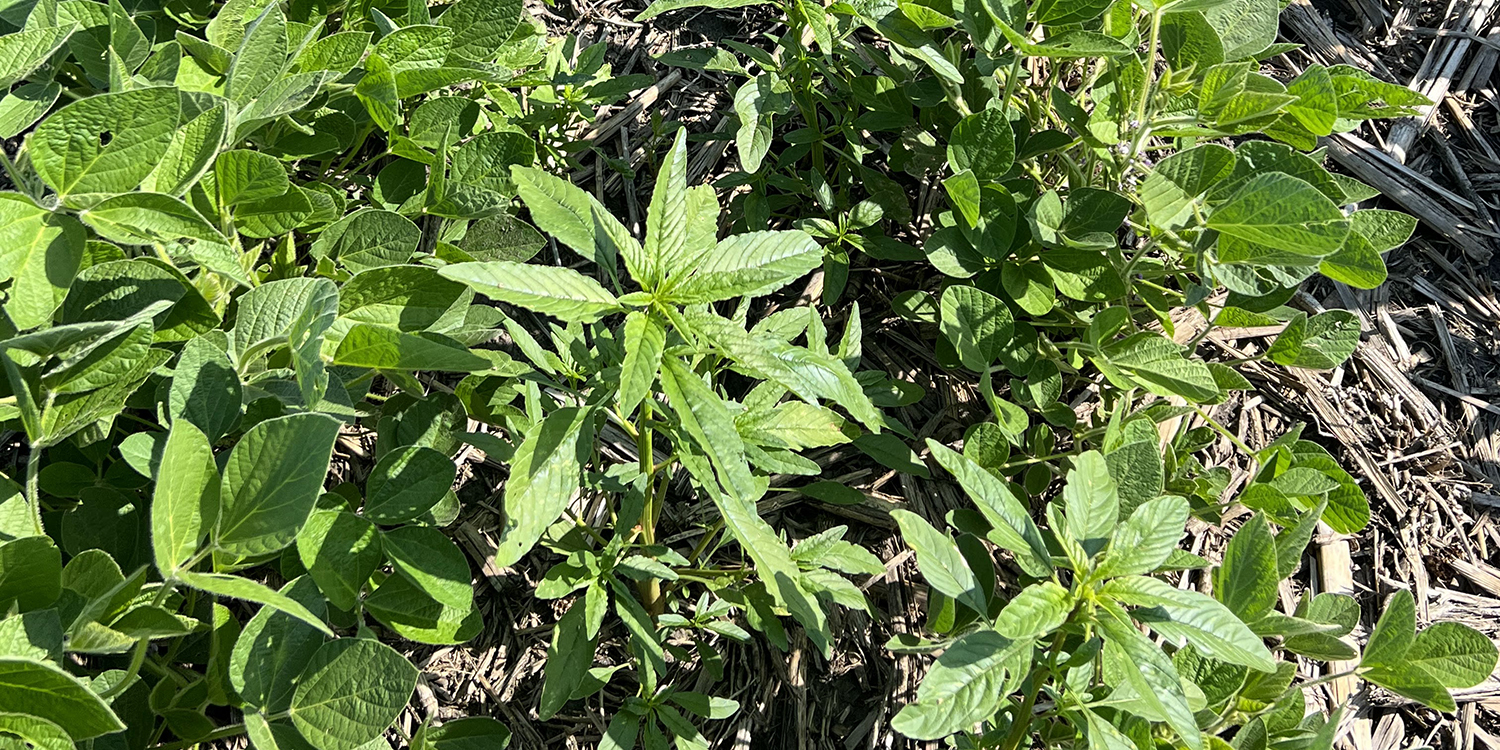As the Bob Dylan song goes, “These times they are a-changin’.” Indeed, “a-changin’” they are.
Waterhemp, which once was only an incidental weed, has overtaken most others in becoming the defining weed of our current weed control programs.
Many modes of action have succumbed to waterhemp resistance, leaving us with fewer effective ways to deal with it. I’ll be covering the history of this issue, as well as solutions we can implement
for effective control in 2024.
TAKING IT BACK TO THE 90’S
In soybeans, waterhemp resistance began in the early-to-mid 90’s with resistance to Pursuit and other ALS products. We then tried using PPO burners both mixed with Pursuit and by themselves to gain control of this troublesome weed with declining results.
Glyphosate then came onto the market and we were able to control waterhemp (and most other weeds!) with no crop response and ease of application. This lasted for a decade before that technology also began to fail. We added PPO burners yet again to our glyphosate programs for added waterhemp control. On high pressure farms, this was then followed by revenge spraying, resulting in another round of burned soybeans, incomplete weed control, and (for most of us) tears of sadness.
With the adoption of Xtend and now Enlist technologies, we are now heavily relying on growth regulators in soybeans for post waterhemp control. Because of this selection pressure, populations of waterhemp and palmer amaranth have been identified as resistant to growth regulators. Looking back in corn, group 15’s (Harness/Outlook/Dual and their atrazine premixes) have many decades of use as pre’s for control of grass and small seeded broadleaves.
In the mid- to late-90’s, post applications mainly consisted of Marksman, Buctril, Laddok, and eventually Hornet and Steadfast, but each of these products had their own limitations. RoundUp Ready corn was then adopted and weed control simplified.
The late 90’s also ushered in the era of a new mode of action – HPPD’s. One of the first to be introduced was Balance, which gave unmatched control of woolly cupgrass. This was quickly followed by the introduction of Callisto. This game-changing product brought with it greater crop safety, a wider application window and stronger broadleaf weed control. Other HPPDs were eventually brought to market and built a majority share of broadleaf weed control in corn, both pre and post.
LEAKS IN CONTROL
In seed corn growing areas of Iowa with heavy HPPD use, weed control started diminishing 8 to 10 years ago. Waterhemp which was once completely controlled in post emergence began to become more difficult to control. Eventually this issue spread to commercial corn fields it appeared waterhemp was starting to ‘leak’ through post applications in corn, but it wasn’t bad enough yet to cost yield. Unfortunately, a lot of these surviving waterhemp were still producing seed.
Last year this leak turned into a drip and this year it appears the faucet has opened. There’s a lot of clean fields out there this year, but there are also a lot of cornfields with marginal to poor waterhemp control, with many to only be discovered at harvest.
A common phrase in the agronomy world is, “The cleaner the corn, the cleaner the beans. The cleaner the beans, the cleaner the corn.” With more difficult weed control in corn, we are putting more pressure on our already pressured soybean programs. This is resulting in earlier breaks in soybean waterhemp control and larger than labeled weeds when post applications are made. Second post applications are becoming needed to finish off the survivors.
PLAN FOR THE FUTURE
So what can we do? First, we have to decide if we are starting to have or already have a problem. Waterhemp in corn that was 6”-12” in August doesn’t seem that intimidating from the combine in October but their reproduction puts significant pressure on your weed control program the following year. Incomplete control in soybeans is more obvious but it puts the same pressure on your weed control program the following year in corn.
Obviously higher rates of pre’s in corn and soybeans will give strong and longer control of waterhemp, helping to ease the burden on the post application. In corn, because of our reliance of HPPD’s over the past 20+ years, it is hard to recommend relying exclusively on that mode of action for reliable waterhemp control in 2024. A better approach would be to incorporate Clarity, Diflexx, Status or Tough into your current HPPD program for additional waterhemp control. Adding Liberty is an additional option for glufosinate tolerant corn.
For Enlist soybeans, the best suggestion for better post control would be to use Enlist tank-mixed with Liberty. The two active’s complement each other and give us two effective modes of action versus one.
In Xtend soybeans, the best recommendation is to only plant XtendFlex soybeans to give us the ability to utilize Liberty on the post pass if the XtendiMax or Engenia can’t be applied, or if a second application is necessary.
“These times they are a-changin’.” As a matter of fact, what was once easy weed control has now become much more difficult. Unfortunately, this is our new reality. As you face 2024, look to Wells Ag Supply to help create a herbicide plan that makes the most sense for your acres.



